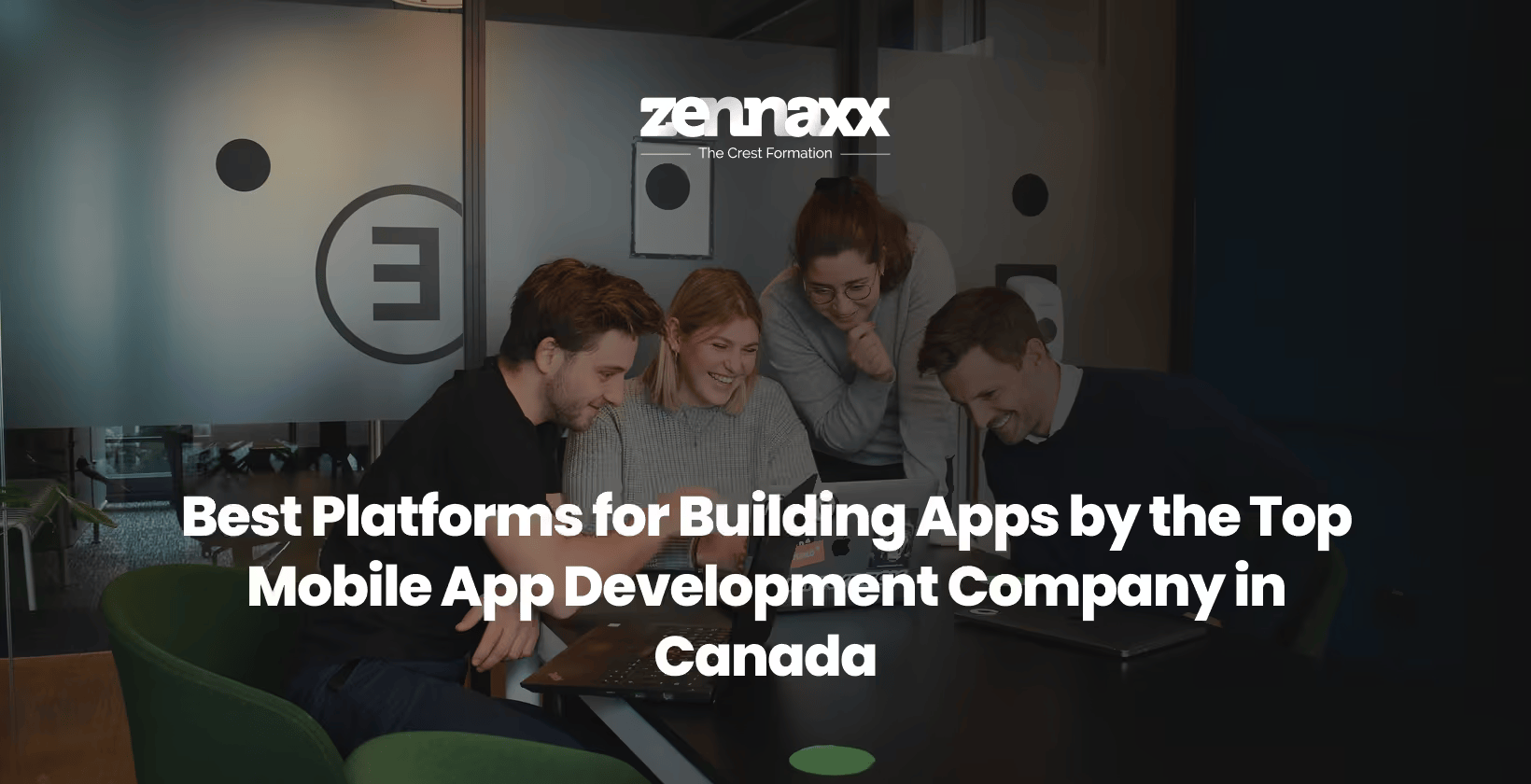
Smart TV mobile application development is the process of designing, building, and optimizing applications specifically for Smart TVs and maintaining compatibility with large screens, remote navigation, and streaming capabilities. Smart TV applications are developed to support various platforms such as Android TV, Tizen, webOS, and tvOS, providing seamless media playback, interactive content, and user-friendly interfaces. The development process of Smart TV applications includes requirement analysis, UI/UX design for large-screen optimization, front-end and back-end development, API integration, testing, and deployment on Smart TV app stores.
The main programming languages for Smart TV applications include Java, Kotlin, Swift, JavaScript, and C++. The main frameworks for Smart TV applications include Android TV SDK for Android TV, Tizen SDK for Samsung Smart TVs, webOS SDK for LG Smart TVs, and tvOS SDK for Apple TV. The cost of developing a Smart TV application ranges from $10,000 to $50,000, depending on features, platform, UI complexity, and third-party integrations.
Smart TV applications are designed differently from other apps and require large-screen UI optimization, remote control navigation, and enhanced media streaming capabilities. You should hire a Smart TV development agency to ensure expert development, optimized UI/UX, platform-specific compatibility, and post-launch support. A professional agency provides customized solutions, seamless performance, and integration with Smart TV platforms, leading to a high-quality and scalable application.
- Planning and Research
- Platform Selection
- Designing and Prototyping
- Developing the Smart TV application
- Testing and Debugging
- Submission and Launch
- Post-Launch Support and Updates
1. Planning and Research
Planning and research define the app’s purpose, align its features with market needs, and ensure it delivers a unique value proposition by analyzing competitors, understanding user preferences, and prioritizing core functionalities.
- Studying Competitors: Studying competitors involves evaluating similar apps to identify market gaps and trends that influence the app’s design and features. Researching successful competitor applications provides insights into user expectations while identifying weaknesses, which helps create unique offerings. The best practice for studying competitors is to use competitor benchmarking and analyze user reviews to uncover opportunities for differentiation.
- Outlining Core Features: Outlining core features determines the app’s key functionalities and establishes its value proposition. Listing features such as intuitive navigation, personalized settings, or intelligent recommendations ensures the app addresses specific user needs. The best way to outline core features is to prioritize essential features that provide maximum value to users and align with the app’s purpose.
- Aligning with User Preferences: Aligning with user preferences focuses on customizing the app to meet the expectations of its target audience. Conducting user interviews and analyzing usage data ensures the app reflects user behavior and preferences. The best approach to aligning user preferences is continuously refining the app’s features by incorporating direct feedback from potential users.
2. Platform Selection
Platform selection involves identifying the most suitable Smart TV platforms, such as Tizen, webOS, Android TV, or Roku, to maximize compatibility, reach, and functionality.
- Evaluating Market Share: Evaluating market share examines the popularity and demographics of various platforms to ensure the app targets the right audience. Platforms with significant user bases, such as Android TV and Roku, provide better opportunities for user acquisition. The best practice is prioritizing platforms with widespread adoption and high engagement rates in your target regions.
- Considering Feature Support: Considering feature support ensures that the app’s planned functionalities, such as voice commands or streaming optimization, align with the technical capabilities of each platform. Selecting platforms that enhance the app’s performance and user experience is a good way to consider feature support.
- Reviewing SDKs and Tools: Reviewing SDKs and tools ensures that development environments such as Tizen Studio or Android Studio meet the app’s technical requirements. Choosing robust tools helps streamline development and ensure adherence to platform guidelines. The best approach is to select tools with comprehensive documentation and efficient debugging capabilities.
3. Design and Prototyping
Design and prototyping transform concepts into visually engaging and user-friendly layouts while validating usability and functionality through iterative testing.
- Creating Wireframes: Creating wireframes establishes the structural layout of the app, focusing on logical navigation and large-screen optimization. Designers use tools such as Figma to draft layouts that prioritize the readability and functionality of smart TV applications. The best practice for designing and prototyping is to create wireframes that highlight simplicity and clarity to enhance user satisfaction.
- Optimizing for Large Screens: Optimizing for large screens ensures the app’s design aligns with the unique requirements of Smart TVs. Clear fonts, scalable visuals, and well-organized layouts make the interface accessible and visually appealing. A good way to optimize large screens is to follow platform-specific design guidelines to ensure consistency and usability.
- Testing Usability: Testing usability identifies design flaws and gathers user feedback to refine the app’s interface. Prototypes are tested with diverse user groups to ensure simple navigation and functionality in applications. The best approach for testing usability is to conduct iterative usability tests and apply insights to improve the user experience consistently.
4. Developing the Smart TV application
Development focuses on building the application by coding platform-specific features, ensuring compatibility, and optimizing performance for various Smart TV platforms.
- Setting Up the Environment: Setting up the environment prepares the development tools and frameworks required to build the application. Developers configure platforms such as Tizen Studio, Android Studio, or webOS IDE to ensure compatibility with the target devices. The best practice for setting up the environment is maintaining a clean, well-documented setup that enables efficient collaboration and troubleshooting.
- Implementing Core Features: Implementing core features involves coding essential functionalities such as navigation, streaming, and content filtering. Developers prioritize lightweight and efficient coding practices to optimize the app’s performance for Smart TV hardware. Modularizing code for easier updates and scalability in future iterations is a good way to implement core features.
- Ensuring Compatibility: Ensuring compatibility verifies that the application runs smoothly across multiple Smart TV platforms and screen resolutions. Developers use platform emulators and real devices to test performance and resolve compatibility issues. The best approach to ensure compatibility is to conduct comprehensive testing on all target platforms to ensure consistent functionality.
5. Testing and Debugging
Testing and debugging ensure the application performs efficiently across devices and scenarios.
- Usability Testing: Usability testing evaluates the app’s interface and navigation for intuitiveness and ease of use. Testers simulate real-world scenarios to assess how users interact with the app’s features. The best practice for testing and debugging is to gather feedback from diverse user groups and implement changes that improve accessibility and engagement.
- Performance Testing: Performance testing measures the app’s speed, responsiveness, and stability under various conditions. Simulating high traffic and diverse usage patterns helps identify and resolve performance bottlenecks. The best practice to perform testing is to use automated testing tools to test scalability and reliability efficiently.
- Fixing Bugs: Fixing bugs addresses errors and inconsistencies discovered during testing to ensure the app meets quality standards. Developers systematically identify and resolve issues using debugging tools provided by the development environment. The best approach to fixing bugs is to maintain a detailed bug-tracking system to prioritize and resolve problems effectively.
6. Submission and Launch
Submission and launch prepare the app for app store deployment and market promotion
- Compliance with Guidelines: Compliance with guidelines ensures the app meets platform-specific requirements for submission, including technical standards and content policies. Developers thoroughly review documentation from platforms such as the Roku Channel Store or Google Play. The best practice for compliance is to follow submission checklists to avoid rejections and streamline the approval process.
- Creating App Listings: Creating app listings highlights the app’s features and benefits with engaging visuals, detailed descriptions, and promotional videos. Well-designed app store pages attract users and enhance download rates. A good way to create an app listing is to use high-quality screenshots and concise, persuasive text to effectively convey the app’s value.
- Marketing the App: Marketing the app involves promoting its launch through digital channels such as social media, email campaigns, and influencer partnerships. Targeted advertising helps create buzz and drive downloads among the intended audience. The best approach for marketing the app is to develop a comprehensive marketing strategy that aligns with the app’s target user demographics and launch goals.
7. Post-Launch Support and Updates
Post-launch support and updates maintain app performance and address user feedback.
- Monitoring Analytics: Monitoring analytics tracks user behavior, app usage, and performance metrics to identify areas for improvement. The best practice to monitor analytics is regularly reviewing key performance indicators (KPIs) and acting on trends to optimize the app.
- Introducing Updates: Introducing updates enhances the app by adding new features, fixing issues, or improving performance based on user feedback. A good way is to schedule updates strategically to balance new developments with existing user needs.
- Providing Timely Support: Providing timely support addresses user concerns and technical issues promptly to maintain satisfaction. Establishing a 24/7 support system ensures users receive help when needed. The best approach is ticketing systems or chatbots to simplify the support process and improve response times.
What Programming Languages Are Used to Develop Smart TV Applications?
The programming languages used in Smart TV application development ensure seamless performance, platform compatibility, and interactive user experiences.
Listed below are the 5 main programming languages, each with its role in Smart TV applications.
- Java: Java is widely used for Android TV applications, supporting Android TV SDK, robust memory management, and smooth integration with Google services.
- Kotlin: Kotlin is preferred for modern Android TV applications, offering concise syntax, enhanced security, and seamless compatibility with Java-based frameworks.
- Swift: Swift is the primary language for Apple tvOS applications, providing optimized performance, native API support, and advanced media playback capabilities.
- JavaScript: JavaScript is used in web-based Smart TV applications, supporting frameworks like React.js and Node.js for interactive content and streaming services.
- C++: C++ is utilized for high-performance Smart TV applications, offering efficient resource management and native integration with multimedia frameworks.
What Frameworks Are Used to Develop Smart TV Applications?
Frameworks used to develop Smart TV applications, such as Android TV SDK, Tizen Studio, webOS SDK, Roku SDK, and Fire App Builder, provide developers with tools, APIs, and features to simplify the development process. Each framework, much like other mobile app development frameworks, offers structured environments that support efficient application development, testing, and deployment tailored to the unique requirements of Smart TVs
Listed below are the 5 main frameworks used in Smart TV application development.
- Android TV SDK: Android TV SDK is a popular framework for developing applications on Android-based smart TVs. Android TV SDK provides tools for creating user-friendly interfaces optimized for large screens and remote navigation. Android TV SDK’s seamless integration with the Google Play Store and support for advanced features such as voice search and multi-device functionality make it highly versatile for smart TV app development.
- Tizen Studio: Tizen Studio is Samsung’s framework for building applications on its smart TVs powered by the Tizen OS. Tizen Studio allows developers to use web technologies such as HTML5, CSS, and JavaScript to create lightweight, interactive apps. Its multimedia capabilities and access to Samsung-specific APIs ensure efficient development tailored to Samsung’s ecosystem.
- webOS SDK: webOS SDK is LG’s official framework for creating applications for its smart TVs running on the webOS platform. Developers use HTML5, CSS, and JavaScript to build responsive apps supporting LG’s advanced features, including gesture control and AI-based recommendations. The framework ensures compliance with modern web standards and smooth integration into LG’s ecosystem.
- Roku SDK: Roku SDK is the official development kit for creating applications on Roku streaming devices and smart TVs. Roku SDK framework uses BrightScript, a lightweight scripting language, to build channels and interactive apps tailored to Roku’s platform. Roku SDK’s simplicity and focus on streaming functionality make it ideal for entertainment-centric applications.
- Fire App Builder: Fire App Builder is Amazon’s framework that is designed to create apps for Fire TV. Fire App framework simplifies development by offering pre-built templates and tools for streaming-focused applications. Fire App Builder supports integration with Alexa for voice control and provides access to Amazon’s vast ecosystem of services and APIs, enhancing app functionality.
How Much Does It Cost to Develop a Smart TV Application?
The cost to develop a Smart TV application ranges from $10,000 to $50,000 for essential apps, $20,000 to $65,000 for medium complexity, and $50,000 to $150,000 or more for highly complex applications. The Smart TV app development cost is influenced by factors such as platform-specific requirements, feature integration, and the level of customization needed.
What is the Average Salary of a Smart TV Application Developer?
The average salary of a Smart TV application developer ranges from $65,000 per year for entry-level positions to over $100,000 annually for experienced professionals, with hourly rates typically ranging from $30 to $50, depending on expertise and project complexity. As the demand for Smart TV applications grows, developers with specialized skills in this field are likely to see increased earning potential.
Are Smart TV Applications Developed in the Same Way as Other Types of Mobile Apps?
No, Smart TV applications are not developed in the same way as other types of mobile apps, as they are specifically optimized for large-screen interfaces and remote-based navigation, even though both share some programming languages and frameworks. Developers also prioritize lightweight design and compatibility with hardware-limited devices, ensuring smooth performance on smart TVs, which differs from the approach used in mobile application development.
How much time does it take to develop smart TV mobile applications?
The time required to develop Smart TV mobile applications ranges from 4 to 10 months, with basic applications taking 4–6 months and advanced applications requiring 8–10 months or more. The development timeline depends on platform selection (Android TV, Tizen, webOS, tvOS), UI/UX complexity, feature set, backend integrations, and testing requirements.
Should I Hire a Smart TV App Development Agency?
Yes, you should hire a Smart TV app development agency to ensure expert development, platform-specific optimization, and seamless user experience. A Smart TV app development agency provides customized UI/UX design for large screens, optimized media streaming solutions, and integration with platforms like Android TV, Tizen, webOS, and tvOS. Hiring an agency ensures efficient project management, thorough testing, and post-launch support, leading to a high-performance and scalable Smart TV application.

